Wondering how to improve your inventory receiving process? A well-structured receiving system ensures accuracy, efficiency, and quality control from the moment shipments arrive.
In the convenience distribution industry, where speed and precision are critical, a disorganized receiving process can lead to stock discrepancies, delays, and frustrated customers. By following best practices, you can minimize errors, maintain accurate inventory records, and keep your supply chain running smoothly.
This guide covers essential strategies for preparing, inspecting, and organizing incoming inventory. From leveraging technology to training your team, these steps will help you create an efficient, reliable receiving process.
Understanding the Importance of Receiving in Inventory Management
Receiving inventory is more than just unloading shipments—it’s the first checkpoint in ensuring accuracy and efficiency throughout your supply chain. A single mistake at this stage can result in stock discrepancies, miscounts, or damaged goods, leading to overstock, stockouts, or lost sales.
For convenience distributors, these issues can quickly escalate, affecting customer satisfaction and revenue. To avoid costly errors, businesses must implement a structured and organized receiving process that includes:
- Thorough inspection and verification of shipments.
- Clear communication with suppliers to prevent order discrepancies.
- Technology integration, such as barcode scanners or an ERP system, to track inventory in real time.
By making receiving a priority, you help ensure inventory accuracy, streamline operations, and improve overall decision-making.
Preparing for Incoming Shipments

An efficient receiving process starts before shipments even arrive. Proper preparation minimizes errors, reduces delays, and sets the stage for smooth operations.
Communicate with Suppliers
Clear communication with suppliers helps prevent issues before they happen. Make sure to:
- Verify that purchase orders (POs) are accurate and include detailed item descriptions, quantities, and packaging requirements.
- Set expectations for shipping standards, such as palletization and labeling, to avoid confusion.
- Maintain an open line of communication to stay informed about delays or changes to shipments.
When suppliers and warehouse teams are aligned, shipments arrive as expected, reducing last-minute surprises.
Organize the Receiving Area
A well-prepared receiving area is essential for handling shipments efficiently. To maintain accuracy and safety:
- Keep the area clean and free from clutter to reduce errors.
- Equip the space with barcode scanners, scales, and safety gear for quick processing.
- Assign trained staff to oversee the process, ensuring consistency in receiving operations.
A designated receiving team helps reduce oversight and speeds up the process while keeping records accurate.
Coordinate Delivery Schedules
Unorganized delivery schedules can lead to bottlenecks, misplaced shipments, and rushed inspections. Avoid chaos by:
- Using a delivery calendar to stagger incoming shipments and prevent overlap.
- Planning staffing and space availability based on expected shipment volumes.
- Scheduling high-priority or large shipments at times when adequate resources are available.
By taking proactive steps in preparation, you lay the groundwork for an efficient, accurate receiving process that supports overall warehouse productivity.
Inspecting and Verifying Shipments

Once a shipment arrives, thorough inspection and verification are essential to ensuring the goods meet your expectations. Skipping or rushing this step can lead to inventory discrepancies, stock shortages, and operational disruptions.
To prevent errors, follow a structured approach to verifying shipments:
Inspect for Damage
Before accepting a shipment, check for visible signs of damage or tampering, such as:
- Torn or punctured packaging.
- Crushed or dented boxes.
- Broken security seals or signs of mishandling.
If damage is found:
- Document the issue with photos and detailed notes for supplier communication.
- Separate damaged items from the rest of the shipment to prevent them from being mistakenly stocked.
- Report concerns immediately to the carrier and supplier to determine next steps.
Taking the time to thoroughly inspect shipments helps maintain inventory quality and holds suppliers accountable for product condition.
Verify Against Documentation
Once items pass an initial visual check, compare them against purchase records to confirm accuracy:
- Match received items with the purchase order (PO), packing slip, or invoice.
- Check quantities, item descriptions, and product codes to ensure everything aligns.
- Look for discrepancies that could cause stockouts or overages.
Using barcode scanners or an ERP system can streamline this process by:
- Automating item verification.
- Flagging mismatches in real time.
- Reducing manual entry errors.
Automating verification not only saves time but also ensures data accuracy, keeping inventory records up to date.
Conduct Quality Assurance
For perishable, fragile, or high-value goods, perform quality assurance checks before finalizing receipt. Depending on the type of product, this may include:
- Testing samples for freshness, functionality, or performance.
- Ensuring compliance with internal quality standards.
- Verifying expiration dates or temperature-sensitive requirements.
If items fail quality checks, follow an escalation procedure to document and report the issue before the shipment is fully processed.
By systematically inspecting, verifying, and testing shipments, you ensure that only accurate, high-quality inventory is added to stock.
Handling Discrepancies
Even with careful preparation and inspection, discrepancies can still occur. Whether it’s missing items, damaged goods, or incorrect shipments, having a clear resolution protocol in place ensures quick and efficient issue management.
Develop a Standardized Discrepancy Process
Establish a clear, step-by-step process for documenting and resolving shipment discrepancies. Key steps include:
- Log the issue immediately, referencing the PO, packing slip, and received items.
- Take detailed notes and photos to provide evidence of missing or incorrect items.
- Notify the supplier and carrier as soon as possible to initiate resolution.
- Determine the next steps, such as returning items, requesting replacements, or adjusting records.
A standardized process helps ensure discrepancies are handled consistently, reducing the risk of miscommunication or delays.
Maintain Detailed Records
Tracking discrepancies over time helps identify patterns with specific suppliers. Keep a detailed log that includes:
- The type of discrepancy (shortages, damages, incorrect items).
- Supplier details and shipment dates.
- Resolution actions taken (returns, credits, or adjustments).
These records are valuable for supplier performance reviews and can help inform negotiations for future contracts.
Establish Return and Credit Procedures
To minimize disruptions, have clear return and credit guidelines in place. Standard procedures should cover:
- How to return incorrect or damaged items.
- When to request a credit instead of a replacement.
- Who is responsible for return shipping costs.
A well-documented process ensures that returns and credits are handled quickly and consistently, preventing unnecessary delays.
By proactively managing discrepancies, you can reduce operational impact and maintain strong supplier relationships.
Organizing and Storing Inventory Post-Receiving

Once shipments have been inspected and verified, the next step is proper organization and storage. A well-structured storage system not only prevents stock errors but also optimizes warehouse efficiency, making inventory easier to locate and manage.
Label and Tag Inventory
Accurate labeling is essential for tracking inventory and ensuring smooth warehouse operations. Best practices include:
- Use barcode or RFID systems to tag each item or pallet upon receipt.
- Ensure labels are standardized, legible, and placed consistently for easy scanning.
- Integrate labeling with your warehouse management system to enable real-time inventory updates.
By implementing automated labeling, your warehouse can reduce misplacement errors, speed up order fulfillment, and improve overall accuracy.
Sort and Store Items
Organizing inventory by predefined categories improves efficiency and reduces retrieval time. Consider grouping inventory based on:
- Cold Storage: Perishable items requiring refrigeration.
- Hazardous Materials: Items needing special handling or isolation.
- High-Volume Items: Fast-moving products frequently picked for orders.
Using a bin-location system or grouping similar items together ensures quick access while also maintaining product quality, particularly for sensitive goods.
Update Inventory Systems
Once inventory has been stored, immediately update your WMS or inventory management system to reflect:
- Stock levels and locations.
- Any discrepancies or adjustments.
- Items requiring special handling or monitoring.
Keeping inventory records up to date prevents discrepancies and ensures that warehouse staff have accurate, real-time data for replenishment and order fulfillment.
By labeling, sorting, and updating inventory records immediately, your warehouse can maintain a seamless workflow and minimize stock-related errors.
Leveraging Technology for Efficiency
Technology plays a crucial role in streamlining the receiving process and improving accuracy. By incorporating the right tools, warehouses can reduce manual errors, improve tracking, and optimize operations.
Implement an ERP System with Warehouse Management Capabilities
A robust ERP system enhances receiving operations by automating key tasks, such as:
- Real-time inventory updates upon receipt of goods.
- Automated purchase order matching to flag discrepancies instantly.
- Error detection and reporting to prevent stock inaccuracies.
Unlike standalone WMS solutions, an ERP system like DAC ERP integrates warehouse operations with inventory and business management, ensuring a seamless flow of information across departments.
Adopt Mobile Tools and Devices
Equipping warehouse teams with mobile devices improves efficiency and reduces errors in real-time. Key tools include:
- Barcode scanners for quick, error-free data entry.
- RFID readers (primarily for large-scale operations) for automated tracking and verification.
- Tablets or handheld devices for real-time access to inventory data.
While RFID is valuable in large-scale receiving operations, most mid-sized convenience distributors benefit more from barcode scanning and ERP-driven automation.
Use Data Analytics for Optimization
Tracking key metrics in your receiving process helps identify areas for improvement. Data analytics can provide insights on:
- Supplier performance, such as late deliveries or incomplete shipments.
- Error rates, helping pinpoint common receiving issues.
- Delivery times and processing speed, allowing for better workflow planning.
For example, if certain suppliers frequently ship incomplete orders, data analytics can help identify the trend, enabling you to take proactive steps to address the issue and improve supply chain reliability.
By leveraging technology, you can improve accuracy, reduce manual workloads, and create a more efficient receiving process that supports long-term warehouse success.
Training Your Team for Success

Even with the best systems and technology in place, the success of your receiving process ultimately depends on your team. Well-trained staff who understand procedures, tools, and best practices are essential to maintaining inventory accuracy and operational efficiency.
Develop Standard Operating Procedures (SOPs)
Clear, standardized guidelines ensure consistency across your receiving team. Create detailed, accessible SOPs that outline every step of the process, including:
- Inspecting shipments for damage and verifying contents.
- Comparing received goods to purchase orders to confirm accuracy.
- Handling discrepancies, including reporting damaged or missing items.
- Updating inventory records in your WMS or tracking system.
To make SOPs more engaging and easier to follow, consider using:
- Process flowcharts for quick reference.
- Training videos for hands-on learning.
- Checklists to ensure every step is completed correctly.
A well-documented and visually supported SOP keeps training consistent and reduces errors across shifts.
Conduct Regular Training Sessions
Training shouldn’t be a one-time event—ongoing education helps employees stay up to date with new procedures and technologies. Focus on:
- Proper use of barcode scanners, RFID readers, and WMS software.
- Quality control steps to identify and document damaged or incorrect shipments.
- Escalation procedures for reporting discrepancies and requesting resolutions.
Incorporating hands-on workshops, refresher courses, and shadowing opportunities helps reinforce best practices and improves overall performance.
Foster a Culture of Accountability
Encourage your team to take ownership of the receiving process by creating an environment where:
- Accuracy is prioritized, and employees are empowered to double-check their work.
- Mistakes are learning opportunities, not punishable offenses.
- Feedback is welcomed, allowing employees to suggest process improvements.
When employees feel engaged and responsible, they are more likely to catch and prevent errors, ultimately improving overall warehouse efficiency.
How DAC ERP Transforms Your Receiving Process
When it comes to optimizing your receiving process, CDR Software’s DAC ERP provides the tools you need to streamline operations, improve accuracy, and enhance inventory control.
Automated Purchase Order Matching
DAC ERP eliminates manual verification errors by automatically matching incoming shipments to purchase orders in real time. This ensures:
- Immediate discrepancy detection before stock is updated.
- Faster processing, reducing bottlenecks in receiving.
- Fewer costly mistakes that impact order fulfillment.
Real-Time Inventory Updates
Once shipments are verified, DAC ERP instantly updates your inventory system, providing:
- Accurate stock levels, reducing the risk of overstock or stockouts.
- Real-time data visibility, helping warehouse teams make informed decisions.
- Seamless integration with order fulfillment and replenishment planning.
Enhanced Vendor Management
Managing supplier relationships becomes easier and more transparent with DAC ERP. Features include:
- Supplier performance tracking, allowing you to identify recurring issues.
- Streamlined communication for resolving discrepancies efficiently.
- Integrated reporting tools to improve supplier negotiations and accountability.
Integrated Warehouse Management
With DAC ERP, receiving is fully connected to your broader warehouse operations, enabling you to:
- Optimize the layout of your receiving area for better workflow.
- Standardize receiving processes to ensure accuracy across shifts.
- Reduce processing times, getting inventory to shelves faster.
By automating key steps and improving data visibility, DAC ERP helps you maintain a highly efficient, error-free receiving process.
Conclusion
A well-executed receiving process is the foundation of accurate inventory management, smooth warehouse operations, and satisfied customers. By focusing on:
- Thorough preparation before shipments arrive.
- Inspection and verification to prevent discrepancies.
- Organized storage and real-time inventory updates.
- Technology-driven efficiency with ERP and automation.
- Ongoing team training and accountability.
… you can transform receiving from a bottleneck into a competitive advantage.
Take a moment to assess your current receiving process. Are you leveraging the right tools and strategies? Are your employees properly trained and equipped for success?
With the right solutions—like those offered by CDR Software’s DAC ERP—your receiving process can become a seamless, reliable system that supports your entire supply chain.
Ready to streamline your receiving operations? Contact us today to schedule a demo and see how DAC ERP can help optimize your distribution business.
Frequently Asked Questions (FAQs)
Why is the receiving process important in inventory management?
The receiving process is critical for maintaining accurate inventory records. Proper receiving helps prevent errors, reduce discrepancies, and improve operational efficiency across the supply chain.
What are the key steps in the receiving process?
The main steps include:
- Preparing for shipments – Organize the receiving area and schedule deliveries.
- Inspecting shipments – Check for damage and verify against purchase orders.
- Handling discrepancies – Follow standardized protocols to resolve issues.
- Organizing and updating inventory – Label, store, and update records in real time.
How can technology improve the receiving process?
Technology such as warehouse management or ERP systems, barcode scanners, and RFID devices automate verification, inventory updates, and trend tracking. These tools increase accuracy and reduce manual workloads.
What should I do if there are discrepancies in a shipment?
Follow a standardized process:
- Document the issue with photos and detailed notes.
- Notify the supplier to arrange for returns, replacements, or credit.
- Keep detailed records to track recurring issues and improve supplier performance.
How can I ensure my team is prepared for receiving tasks?
- Provide clear Standard Operating Procedures (SOPs).
- Conduct regular training on tools and workflows.
- Foster a culture of accountability to ensure accuracy and efficiency.
What tools are essential for the receiving process?
Key tools include:
- Barcode scanners for accurate tracking.
- Scales for verifying shipment weight.
- Mobile devices for real-time data entry.
- A robust WMS or ERP system to streamline inventory management.
How can I prevent delays during the receiving process?
To avoid delays:
- Schedule deliveries strategically to prevent overlap.
- Keep the receiving area organized and well-equipped.
- Maintain open communication with suppliers to anticipate changes or disruptions.


